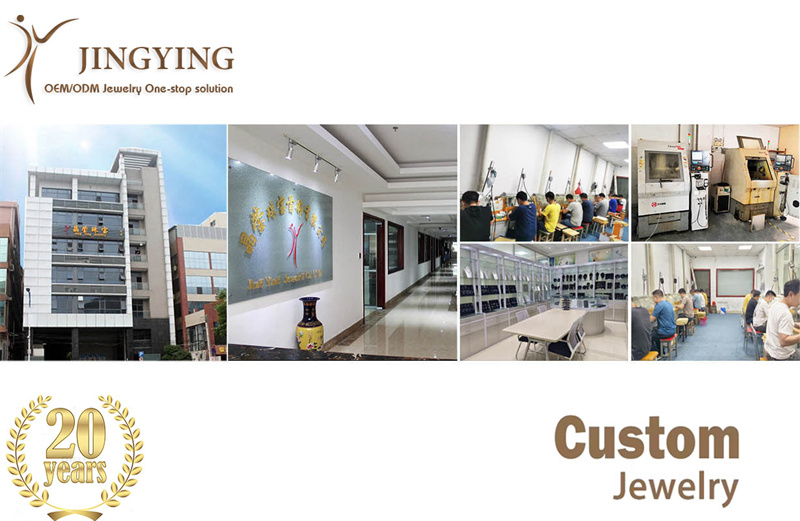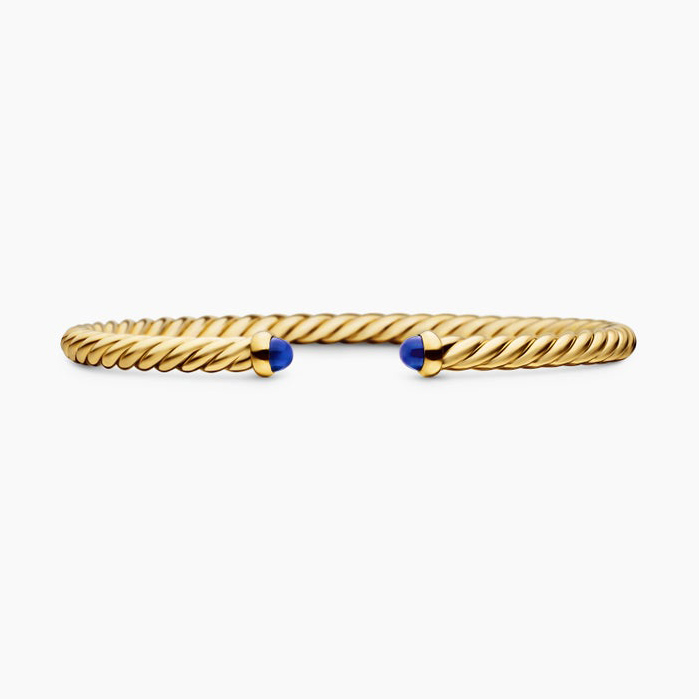Why Sterling Silver Jewelry Is More Expensive Than Brass Jewelry: A Comprehensive Analysis
Introduction: Understanding the Price Divide
The price difference between sterling silver and brass jewelry is immediately apparent to any consumer or jewelry maker. While a similar design might cost $15 in brass, the sterling silver version could easily command $75 or more. This comprehensive 5000-word examination explores the multifaceted reasons behind this price disparity, analyzing factors from raw material costs and production complexities to market positioning and intrinsic value. Understanding these differences is crucial for jewelry designers, retailers, and consumers making informed decisions about their purchases and product lines.
The global jewelry market reflects this pricing hierarchy clearly, with sterling silver occupying the affordable luxury segment at $22.3 billion annually, while brass dominates the fashion jewelry category valued at $38.5 billion. The price difference isn’t arbitrary—it’s rooted in fundamental economic, material, and market realities that this guide will explore in detail.
1. Raw Material Costs: The Foundation of Price Difference
1.1 Precious Metal vs. Base Metal Economics
The most immediate factor in the price difference lies in the fundamental classification of these metals:
Sterling Silver:
- Classification: Precious metal
- Current spot price (2024): $0.85-0.95 per gram
- Annual price volatility: 15-25%
- Market status: Traded commodity with investment value
Brass:
- Classification: Base metal
- Current spot price (2024): $0.0068-0.0078 per gram
- Annual price volatility: 5-8%
- Market status: Industrial material with stable pricing
Cost Comparison:
- Raw material cost ratio: Approximately 120:1
- For a 10-gram piece: Silver = $9.00, Brass = $0.07
- This fundamental difference alone explains much of the retail price gap
1.2 Market Dynamics and Pricing Structures
Silver Market Characteristics:
- Global trading on commodities exchanges (London Metal Exchange, COMEX)
- Influenced by investment demand, industrial use, and mining output
- Subject to geopolitical factors and currency fluctuations
- Requires certified sourcing and documentation
Brass Market Characteristics:
- Primarily industrial pricing structure
- Less affected by investment speculation
- Stable supply chain with multiple sources
- Minimal certification requirements
2. Production and Manufacturing Costs
2.1 Material Handling and Processing
Sterling Silver Processing:
- Requires certified refining and assaying
- Specialized storage and security measures
- Higher insurance costs throughout production
- Strict quality control for purity verification
Brass Manufacturing:
- Standard industrial material handling
- Basic storage requirements
- Minimal insurance overhead
- Simpler quality verification processes
2.2 Manufacturing Efficiency and Yield
Production Yield Comparison:
| Process | Sterling Silver Yield | Brass Yield |
|---|---|---|
| Casting | 90-94% | 92-96% |
| Stamping | 85-90% | 92-95% |
| Machining | 80-85% | 88-92% |
| Overall Efficiency | 85-89% | 91-94% |
Production Cost Factors:
- Silver requires more careful handling due to value
- Brass allows faster production speeds
- Silver polishing requires more skill and time
- Brass tooling lasts longer, reducing equipment costs
2.3 Labor and Skill Requirements
Sterling Silver Craftsmanship:
- Requires highly skilled silversmiths
- Higher wage costs for specialized labor
- More time-consuming processes
- Greater attention to detail required
Brass Production:
- Can utilize standard jewelry manufacturing skills
- Lower labor costs overall
- Faster production cycles
- More amenable to automation
3. Quality Control and Certification
3.1 Purity Standards and Verification
Sterling Silver Requirements:
- Must maintain 92.5% silver content by law
- Requires hallmarking and quality marks
- Regular assaying and certification
- Documentation throughout supply chain
Brass Standards:
- No legal purity requirements
- Quality control focuses on workability
- Minimal documentation needed
- Basic material verification sufficient
3.2 Testing and Quality Assurance Costs
Silver Quality Control:
- XRF testing for every production batch
- Hallmarking and certification fees
- Regular third-party verification
- Comprehensive documentation maintenance
Brass Quality Control:
- Basic material composition checks
- Visual and dimensional inspection
- Minimal certification requirements
- Simplified record keeping
4. Intrinsic Value and Market Perception
4.1 Precious Metal Premium
Sterling Silver Value Proposition:
- Inherent material value retains worth
- Recognized as store of value
- Can be melted and reclaimed
- Historical precedent as currency
Brass Value Characteristics:
- Minimal intrinsic metal value
- Primarily decorative value
- Limited reclaim value
- No historical monetary role
4.2 Consumer Perception and Psychology
Value Perception Factors:
- Silver perceived as “real jewelry”
- Brass viewed as “fashion jewelry”
- Silver carries status and tradition
- Brass seen as temporary or disposable
Market Positioning:
- Sterling silver: Affordable luxury segment
- Brass: Fast fashion and accessory category
- Different consumer expectations
- Varied gifting and occasion use
5. Manufacturing Technical Considerations
5.1 Material Properties and Workability
Sterling Silver Challenges:
- Softer material requires careful handling
- Prone to scratching and denting
- Higher melting point requires more energy
- More difficult to machine precisely
Brass Advantages:
- Harder material withstands production stresses
- Better machinability characteristics
- Lower melting point reduces energy costs
- More forgiving in production errors
5.2 Tooling and Equipment Costs
Silver Production Requirements:
- Specialized tooling for precious metals
- Higher maintenance costs
- Separate equipment to prevent contamination
- More frequent tool replacement
Brass Production Benefits:
- Standard industrial tooling sufficient
- Lower maintenance requirements
- Can use general-purpose equipment
- Longer tool life between replacements
6. Marketing and Branding Costs
6.1 Market Positioning Expenses
Sterling Silver Marketing:
- Emphasis on quality and craftsmanship
- Heritage and tradition narratives
- Certification and quality highlighting
- Luxury-adjacent positioning costs
Brass Marketing Approach:
- Focus on fashion and trends
- Affordable and accessible messaging
- Volume-driven marketing strategies
- Fast-fashion positioning
6.2 Consumer Education
Silver Education Requirements:
- Teaching about purity and hallmarks
- Care and maintenance instructions
- Value retention information
- Quality recognition education
Brass Communication:
- Basic care instructions
- Fashion and styling focus
- Limited value education needed
- Simpler messaging overall
7. Distribution and Retail Considerations
7.1 Inventory Carrying Costs
Sterling Silver Inventory Impact:
- Higher capital tied up in inventory
- Insurance costs throughout distribution
- Security requirements at all stages
- Slower inventory turnover
Brass Inventory Advantages:
- Lower capital requirements
- Minimal insurance needs
- Basic security sufficient
- Faster inventory turnover
7.2 Retail Markup Structures
Typical Markup Practices:
- Sterling silver: 3-5x production cost
- Brass: 5-8x production cost
- Absolute profit higher on silver despite lower multiplier
- Different consumer price expectations
Pricing Psychology:
- Consumers expect to pay more for silver
- Brass competes on price sensitivity
- Silver justifies premium through perceived value
- Brass competes through affordability
8. Long-term Value and Durability
8.1 Lifespan and Durability
Sterling Silver Longevity:
- Can last generations with proper care
- Develops patina but doesn’t corrode
- Maintains structural integrity
- Can be repaired and restored repeatedly
Brass Limitations:
- Shorter functional lifespan
- Can corrode or deteriorate
- Limited repair options
- Often replaced rather than repaired
8.2 Value Retention
Silver Value Proposition:
- Retains material value over time
- Can be sold for melt value
- Antique and vintage markets exist
- Heirloom potential adds value
Brass Value Characteristics:
- Minimal resale value
- No melt value worth pursuing
- Limited collector interest
- Disposable when trends change
9. Industry Structure and Supply Chain
9.1 Supply Chain Complexity
Sterling Silver Supply Chain:
- Mining and refining operations
- International shipping with security
- Multiple certification points
- Specialized distributors and refiners
Brass Supply Chain:
- Industrial metal distribution
- Standard shipping procedures
- Minimal certification requirements
- General-purpose metal suppliers
9.2 Regulatory Compliance
Silver Compliance Costs:
- Precious metals regulations
- International trade documentation
- Anti-money laundering compliance
- Quality standard enforcement
Brass Compliance:
- Basic industrial regulations
- Standard trade documentation
- Minimal regulatory overhead
- Quality standards voluntary
10. Consumer Expectations and Service
10.1 After-Sales Service
Sterling Silver Expectations:
- Lifetime care instructions
- Repair and restoration services
- Sizing and modification options
- Higher customer service expectations
Brass Service Requirements:
- Basic care guidance
- Often replacement rather than repair
- Limited modification options
- Lower service expectations
10.2 Warranty and Guarantees
Silver Warranty Costs:
- Longer warranty periods expected
- Comprehensive coverage required
- Higher liability for defects
- Extended customer support
Brass Warranty Approach:
- Shorter warranty periods
- Limited coverage typical
- Lower defect liability
- Basic support sufficient
11. Economic and Macroeconomic Factors
11.1 Market Influences
Silver Price Drivers:
- Investment demand fluctuations
- Industrial consumption changes
- Currency value movements
- Geopolitical factors
Brass Price Stability:
- Primarily industrial demand driven
- Stable consumption patterns
- Less affected by currency changes
- Minimal geopolitical impact
11.2 Production Scale Economics
Manufacturing Scale:
- Silver: Smaller batch production common
- Brass: Mass production advantages
- Different minimum order quantities
- Varied production lead times
Inventory Management:
- Silver: Just-in-time production preferred
- Brass: Bulk purchasing advantages
- Different storage cost structures
- Varied cash flow implications
12. Conclusion: The Comprehensive Price Justification
12.1 Summary of Key Factors
The price difference between sterling silver and brass jewelry is justified through multiple interconnected factors:
Primary Drivers:
- Raw material cost difference (120:1 ratio)
- Production and handling complexities
- Quality control and certification requirements
- Market positioning and consumer perception
- Long-term value and durability
Secondary Factors:
- Skill requirements and labor costs
- Equipment and tooling investments
- Marketing and distribution expenses
- Regulatory compliance overhead
- Service and warranty expectations
12.2 Value Proposition Analysis
Sterling Silver Justifies Its Price Through:
- Intrinsic material value
- Long-term durability and wear
- Heritage and status associations
- Investment and heirloom potential
- Quality craftsmanship requirements
Brass Offers Value Through:
- Affordable fashion accessibility
- Trend-responsive designs
- Low-risk experimentation
- Volume production efficiencies
- Minimal maintenance requirements
12.3 Strategic Considerations
For Consumers:
- Consider long-term value versus initial cost
- Evaluate intended use and wear frequency
- Assess personal style and value preferences
- Understand care and maintenance requirements
For Jewelry Businesses:
- Align material choice with target market
- Consider production capabilities and scale
- Evaluate total cost beyond material price
- Develop appropriate marketing narratives
The price difference between sterling silver and brass jewelry represents a rational market response to fundamental differences in material value, production requirements, and consumer expectations. While brass serves an important role in making jewelry accessible and fashion-forward, sterling silver’s premium position reflects its enduring value, quality craftsmanship, and long-term appeal.
Understanding these factors enables both consumers and industry professionals to make informed decisions that align with their needs, values, and business objectives. Both materials have their place in the jewelry ecosystem, serving different markets and purposes while providing value in their respective contexts.

